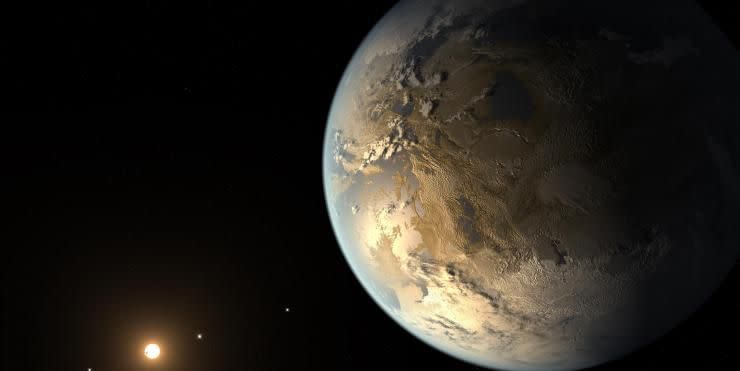Study Shows Exoplanet Has a Stable Axis Just Like Earth

Of all the exoplanets, planets outside of Earth's solar system, discovered in recent years, one that's captured some of the most attention is Kepler-186f. It's often described as one of the "most Earth-like" of all exoplanets discovered and a new study just adds to the case.
A new look at Kepler-186f's axial tilt, also known as obliquity, is stable just like Earth's. Having a stable axial tilt means that the planet likely has both a stable climate and changing seasons. Getting a stable axial tilt as a planet is a complex endeavor, one that involves a planet's relationship with both its parent star, its sibling planets in its solar system, and even its moons. Axial tilt is crucial for a planet's success, to the extent that an unstable tilt might have led to Mars becoming inhospitable to life.
Researchers at Georgia Tech looked at the relationship between Earth and Mars to better understand Kepler-186f. Both planets interact with each other strongly, and as a result their axial tilts on their own could get wobbly. However, the Earth's moon keeps the Blue Planet in check, keeping the tilt steady. The Earth's moon is unique in the solar system, the only satellite to have such a stabilizing effect.
Things play out with a degree of similarity in the Kepler system, where 186f interacts with the similarly named exoplanet Kepler-62f. Kepler-62f was seen as the most Earth-like exoplanet until 186f was discovered in 2014.
“It appears that both exoplanets are very different from Mars and the Earth because they have a weaker connection with their sibling planets. We don’t know whether they possess moons, but our calculations show that even without satellites, the spin axes of Kepler-186f and 62f would have remained constant over tens of millions of years.” says Gongjie Li, a professor who led the study, in a press statement.
There's a lot scientists don't know about either planet. While 186f has a radius larger than Earth and it orbits its star every 130 days, scientists still don't know its mass, composition or density. We also have no idea if the planets have water on them, although they each make good candidates.
This latest study adds to that suggestion.
“Our study is among the first to investigate climate stability of exoplanets and adds to the growing understanding of these potentially habitable nearby worlds,” says.
“I don’t think we understand enough about the origin of life to rule out the possibility of their presence on planets with irregular seasons. Even on Earth, life is remarkably diverse and has shown incredible resilience in extraordinarily hostile environments. But a climatically stable planet might be a more comfortable place to start," says grad student Yutong Shan, who also worked on the study.
There has been a huge surge in exoplanet discoveryin recent years. In large part that's because of the namesake of these various planets, the Kepler Space Telescope. And now that its eventual replacement, TESS, has launched, it's only likely even more will be discovered in the future.
Source: Georgia Tech
You Might Also Like

